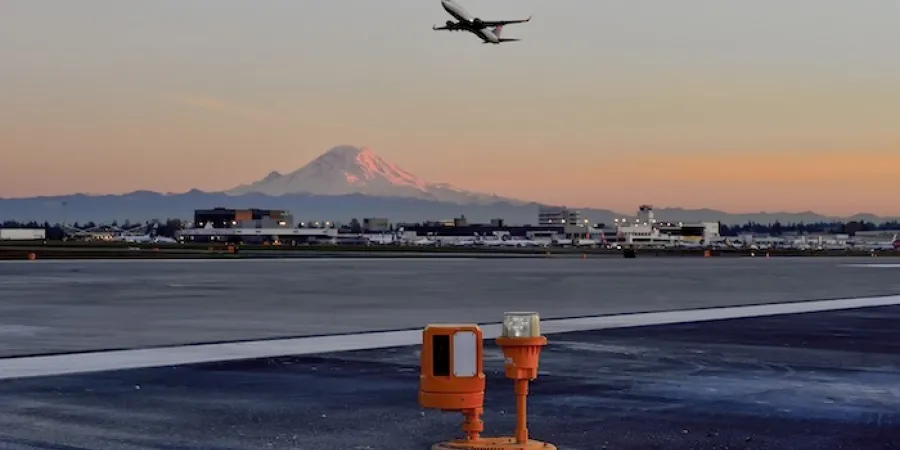Xsight Systems’ FOD Detection Solution to Secure Runways at Beijing Daxing Airport
Daxing will become the second international airport in the Chinese capital to use RunWize, an AI-based threat detection system that improves runway safety and capacity by continuously monitoring and detecting foreign object debris and other hazards
IsraelDefense
| 20/06/2019
Beijing Daxing International Airport (BDIA), the new major airport to serve the Chinese capital, has selected Xsight Systems’ FOD detection solution for installation on its east and north runways. Earlier this year, Beijing Capital International Airport (the second busiest in the world in terms of passenger traffic) has also selected Xsight Systems’ FOD detection solution for installation on its east runway.
Beijing Daxing International Airport will become one of the world’s largest airports upon its opening, which is scheduled for the end of September 2019. It will use Xsight Systems’ RunWize to improve runway safety and capacity by continuously monitoring and detecting any forms of debris or hazards.
Foreign Object Debris (FOD) and environmental threats on the runway cost the global aviation industry nearly $12 billion each year. According to Xsight Systems, their RunWize runway threat detection solution prevents many of the FOD incidents, bird strikes, and runway excursions, thus increasing runway safety, capacity, and efficiency. Amongst the leading airports utilizing this technology are Boston Logan International Airport, Seattle-Tacoma International Airport, Tel Aviv Ben-Gurion International Airport, and Bangkok Suvarnabhumi International Airport. Recently, the solution was also adopted by Beijing Capital International Airport as well as by the Israeli Air Force.
“We are proud that Xsight’s global reputation as an industry leader is acknowledged by the Chinese aviation market,” said Alex Koren, CEO of Xsight Systems. “As China is becoming the largest aviation market, with intensive growth in air traffic, grows the need for a runway threat detection solution to boost both safety and capacity of airport runways.”
According to the Civil Aviation Administration of China (CAAC), the country aims to have 450 airports by 2035, almost doubling its current number of airports. As of end-October 2018, China had 234 civil airports, and it seeks to construct 216 new airports by 2035 to meet the growing demands for air travel.
RunWize significantly improves safety during take-off and landing by using sophisticated image and radar processing algorithms based on artificial intelligence (AI) to detect and assess threats on the runway, according to the company.
Daxing will become the second international airport in the Chinese capital to use RunWize, an AI-based threat detection system that improves runway safety and capacity by continuously monitoring and detecting foreign object debris and other hazards
Beijing Daxing International Airport (BDIA), the new major airport to serve the Chinese capital, has selected Xsight Systems’ FOD detection solution for installation on its east and north runways. Earlier this year, Beijing Capital International Airport (the second busiest in the world in terms of passenger traffic) has also selected Xsight Systems’ FOD detection solution for installation on its east runway.
Beijing Daxing International Airport will become one of the world’s largest airports upon its opening, which is scheduled for the end of September 2019. It will use Xsight Systems’ RunWize to improve runway safety and capacity by continuously monitoring and detecting any forms of debris or hazards.
Foreign Object Debris (FOD) and environmental threats on the runway cost the global aviation industry nearly $12 billion each year. According to Xsight Systems, their RunWize runway threat detection solution prevents many of the FOD incidents, bird strikes, and runway excursions, thus increasing runway safety, capacity, and efficiency. Amongst the leading airports utilizing this technology are Boston Logan International Airport, Seattle-Tacoma International Airport, Tel Aviv Ben-Gurion International Airport, and Bangkok Suvarnabhumi International Airport. Recently, the solution was also adopted by Beijing Capital International Airport as well as by the Israeli Air Force.
“We are proud that Xsight’s global reputation as an industry leader is acknowledged by the Chinese aviation market,” said Alex Koren, CEO of Xsight Systems. “As China is becoming the largest aviation market, with intensive growth in air traffic, grows the need for a runway threat detection solution to boost both safety and capacity of airport runways.”
According to the Civil Aviation Administration of China (CAAC), the country aims to have 450 airports by 2035, almost doubling its current number of airports. As of end-October 2018, China had 234 civil airports, and it seeks to construct 216 new airports by 2035 to meet the growing demands for air travel.
RunWize significantly improves safety during take-off and landing by using sophisticated image and radar processing algorithms based on artificial intelligence (AI) to detect and assess threats on the runway, according to the company.



